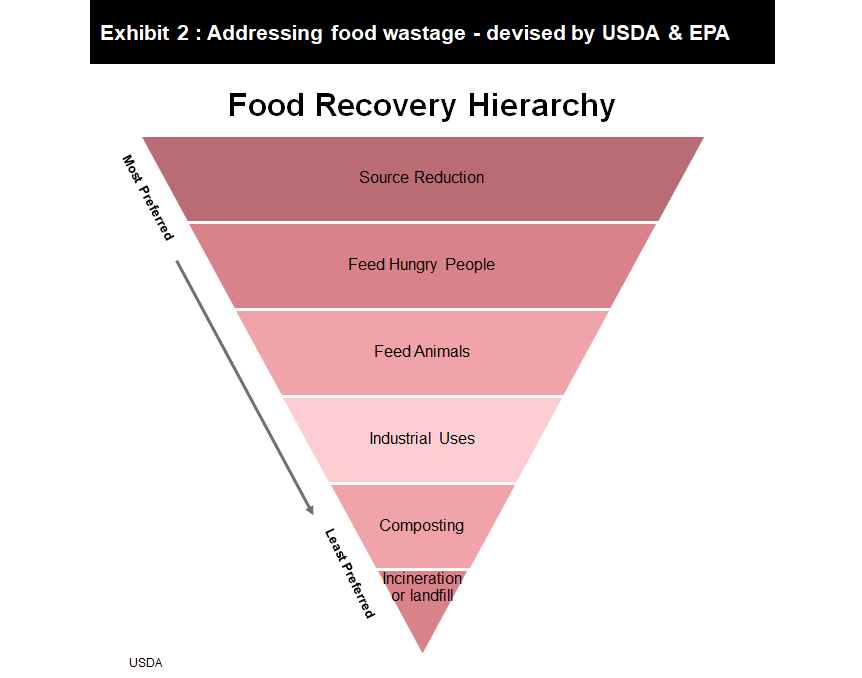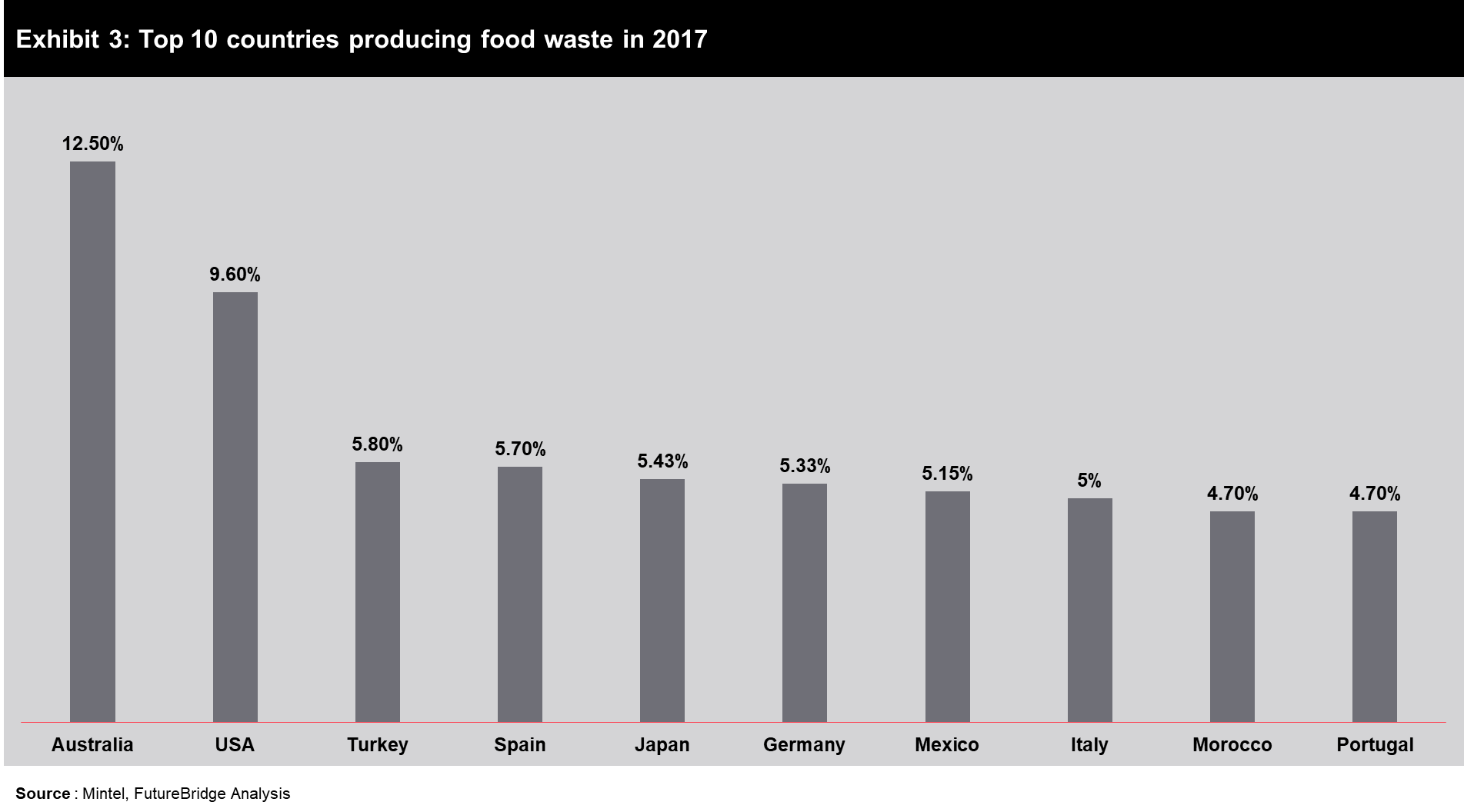Food Wastage and its consequences
Food waste is a global issue that needs to be addressed urgently. Its substantial repercussions include both in terms of food security as well as environmental.
Food wastage accounts for 8% of the global greenhouse gas emissions, according to the Food and Agriculture Organization and the World Resources Institute. In contrary to this, 870 million people in the world are undernourished due to food unavailability/ affordability. One-third of produced food for human consumption is lost or wasted globally, amounting to around 1.3 billion tonnes per year.
Environmental Repercussions
Reducing food waste also impacts climate change as 20 percent of US total methane emissions are from landfills. From an environmental viewpoint, food which is wasted after harvest uses a quarter of the water used for agriculture in a year. This becomes a major contributor to global greenhouse gas emissions.
As predicted by The United Nations, we will require 70% more food in order to feed the population projected. There will be more number of youths in the world as well as there will be a low poverty level, which will account for higher daily food intake.
Fruits & vegetables prepared foods, Liquid foods top the category list from waste is generated as depicted in Exhibit1.
- Agricultural Production: Food losses in farmland is more likely to occur than the other steps. Majority of the losses are due to mechanical damage, spillage during threshing of fruit picking, sorting out due to fruit selection parameters
- Post-harvest handling and storage: losses are majorly due to spillage and degradation during handling, storage, and transportation between the land and the distribution
- Processing: Processing losses differ according to the type of processing. Few of them are common for all kinds of processing plants like raw material spillage in the plant, degradation of long-stored raw materials, and process interruptions. Losses also occur when fruits are unsuitable during washing, sorting, slicing. Some specific industries like beverage based, Bread making have specific food wastage sources
Some examples include
- Juice productions have post-processing food wastes like peels, pulp. Real Good Stuff Co.uses the leftover pulp to make dog treats
- Alcohol industries have sugar extracted grains which are wasted. Regrained has turned the upcycled grains from alcohol industries into super gain flour. This flour is low in sugar, high in fiber content and protein
- Distribution: Includes losses from market system, e.g. at wholesale markets, supermarkets, retailers and wet markets.
- Consumption: Finally, losses also takes place in household systems.
Unique players
 ReFed has provided a unique roadmap for reducing food waste. It has produced a 27 point list of ways to address food waste issue starting from standard date labeling to cold chain management to packaging, to donation to value-added processing solution. The roadmap also includes estimated costs, economic benefits as well as the value of each of the 27 proposed solutions. ReFed roughly estimated that when these solutions will be implemented, they will generate $10 billion and save around 1.8 billion meals, 1.6 trillion gallons of water annually, provide $5.6 billion annual consumer savings and reduce greenhouse gas emissions by 18 million tons annually along with $1.9 billion annual business profits.
ReFed has provided a unique roadmap for reducing food waste. It has produced a 27 point list of ways to address food waste issue starting from standard date labeling to cold chain management to packaging, to donation to value-added processing solution. The roadmap also includes estimated costs, economic benefits as well as the value of each of the 27 proposed solutions. ReFed roughly estimated that when these solutions will be implemented, they will generate $10 billion and save around 1.8 billion meals, 1.6 trillion gallons of water annually, provide $5.6 billion annual consumer savings and reduce greenhouse gas emissions by 18 million tons annually along with $1.9 billion annual business profits.

Winnow technologies are using Artificial Intelligence for helping food companies/ restaurants/ cafes to reduce food wastage. They have automated food waste capture to provide more precious insight to help kitchen teams reduce waste, thereby increasing efficiency. With the help of their technology, players like IKEA, Marriott International, Accor hotels, Costa Cruises have aimed at reducing food losses.
USDA has sourced out a hierarchy for addressing food wastage. Reduction at the source of the wastage tops the pyramid as this would result in better recovery as depicted in Exhibit 2.
Initiatives taken by players
Company-led initiative
- Food Waste Alliance
An industry-led initiative focused on reducing food waste by increasing food donation and send unavoidable food waste to productive use like energy, composting, and away from landfills. This is formed by the association of Consumer Brands Association, The FMI (The Food Industry Association), and The National Restaurant Association. Some of the industries associated with this alliance include- The Kellogg Company, General Mills, Mc Donald’s, Sodexo, Wegmans, Yum Brands, The Cheese Factory, Conagra Brands, Del Monte, Feeding America, Albertsons, Chick-fil-A, and others.
This initiative has three major goals: Reduction at source, Donate food, Recycle (unavoidable wastage)
Supply chain (Technological)


Orora has brought product packaging innovation to Australia’s cold supply chain. They are using Xsense® HiTags in any perishable product package to gather real-time storage information from farm to retail outlet transmitted through online alerts. BT9 is an Israeli company that has developed Xsense, an innovative cold chain monitoring system. Xsense system provides real-time, accessible data, allowing in-prompt decisions for better quality assurance practices. The data is visible to all stakeholders
Food Processing (Food Donations, Policy Reforms)
![]()

General Mills is one of the 1st members of US food waste and loss challenge, a program launched by USDA and EPA (Environmental Protection Agency) and has been honored by being a champion at this challenge for their continued efforts to reducing food waste and escalating information about it. General Mills have announced a new commitment by reducing operations wastage by 50% by 2030. This is in regard to their prior commitment in 2016 for the zero-waste-to-landfill target at 30% of their production facilities by 2020 and 100% by 2025.
General Mills has claimed to have generated less than 2% of food waste compared to total product volume. They aim at collaborating with donation companies like Feeding America and form policies for reducing waste.

TetraPak is applying World Class Manufacturing principles for cutting down waste in their plant. By doing this, they can reduce waste, minimize water loss, improve efficiency, and reduce energy consumption across all our operations. TetraPak claims to recycle close to 100% material waste.
Retails markets (Technological)

HelloFresh is the largest meal kit company in the USA. It is using Spoiler Alert software in its distribution centres. This software analyzes waste and suggests reduction tactics. In addition, it also integrates food donation into workflow to avoid food into landfill. Spoiler Alert also has the food giant Sysco as its customer.


Grind2Energy (by Emerson) has partnered with Whole Foods Market to help the company succeed with its commitment and dedication to environmental responsibility. It is installing a food recycling system for converting them into fertilizers. This has drastically reduced their wastes going into landfills from their stores. Since, 2014, Grind2Energy has helped Whole Foods produce 220000 pounds of nutrient-rich fertilizes, eliminate greenhouse emissions (having equivalency of 2.5 million automobile miles), and convert enough natural gas to heat about 850 homes for one month.
Restaurants/ Café (Technological)

![]() Winnow technologies has automated food waste capture to provide richer insight to help kitchen teams reduce waste, thereby increasing efficiency. It’s a smart technology that weighs the food being trashed in the trash can. And, then the kitchen staff have to input the food they are throwing away. As they input the data, it showed insights on how much they are losing cash over a year and its environmental impact. Winnow has helped Ikea to save 350,000 meals worth about $900,000 in 8 months. Winnow vision is installed in 23 stores of the UK & Ireland. And, help them cut down food waste by 50%. Hence saving 1.2 million meals.
Winnow technologies has automated food waste capture to provide richer insight to help kitchen teams reduce waste, thereby increasing efficiency. It’s a smart technology that weighs the food being trashed in the trash can. And, then the kitchen staff have to input the food they are throwing away. As they input the data, it showed insights on how much they are losing cash over a year and its environmental impact. Winnow has helped Ikea to save 350,000 meals worth about $900,000 in 8 months. Winnow vision is installed in 23 stores of the UK & Ireland. And, help them cut down food waste by 50%. Hence saving 1.2 million meals.
Government-led initiatives
A significant number of countries have started taking initiatives in order to reduce/ manage their food wastage. Some of them includes:
- Dubai
In Dubai, an equivalent to $4 billion costs them per year due to food wastage. This amounts to 2.7kg of food being wasted every day per person. Dubai Municipality signed an MOU (Memorandum of Understanding) with Winnow Technologies to encourage using technologies for reducing food waste across the hospitality sector in UAE. At present, Winnow is helping a large number of hotels in UAE which is saving the cost of about $887,000 per year. This has also reduced 213 tonnes of food which is roughly 1000 meals per day in Dubai, being ended up in landfills.
- France
In France, around 10 million tons of food is wasted per year. This costs approximately 16 billion euros per year. France is responsible for 15.3 million tons of CO2. In 2012, it launched laws enforcing private companies to recycle organic waste, if they produce 120 tons of it per year. Recycling has been made mandatory for companies producing 10 million tons of organic waste per year. In 2016, France banned supermarkets to throw away unsold foods.
- Italy
Italy wastes around 5.1 million tons food per year. Italian government made it easy on food companies to donate unsold foods. Even, food that is past sell-by date can be donated.
- Denmark
In 2016, Denmark minister launched a subsidy scheme. This scheme has distributed almost $750,000 to projects tackling food waste throughout the food chain. It is legal in Denmark to sell expired foods as long as it clearly labelled and shows no sign of potential health risk.
- South Korea
In 2013, the government of South Korea, has implemented a new policy that made households pay for recycling according to the food they waste. In Seoul alone, the volume of waste decreased by 10%- 300 tonnes per day by 2017.
- Australia
Australia is the 1st country to set a target of reducing its waste generation by 50% by 2030. Food waste costs around $20 billion per year. It has decided on investing $1.2 million to support food rescue organisations. At present, companies like- Second bite, Oz harvest and Food Bank Australia are supported by Food Rescue Charities Program.
Australia, USA, Turkey are amongst the top countries producing food wastage globally as depicted in Exhibit 3.
References
- FAO website
- USDA Website
- EPA website
- Winnow technologies
- Statistica
- IFCO
Need a thought partner?
Share your focus area or question to engage with our Analysts through the Business Objectives service.
Submit My Business ObjectiveOur Clients
Our long-standing clients include some of the worlds leading brands and forward-thinking corporations.
- © 2021 Cheers Interactive (India) Private Limited. All rights reserved. FutureBridge ® is a registered trademark of Cheers Interactive (India) Private Limited.




































